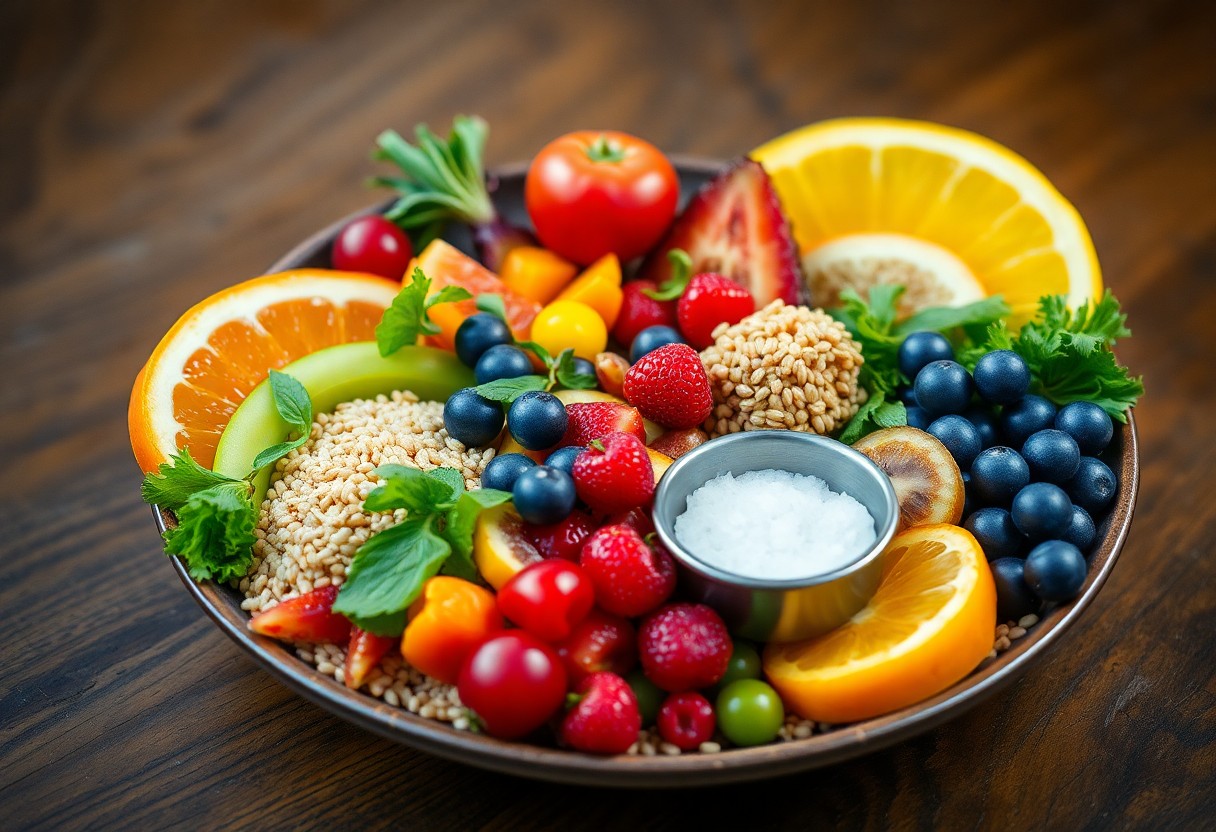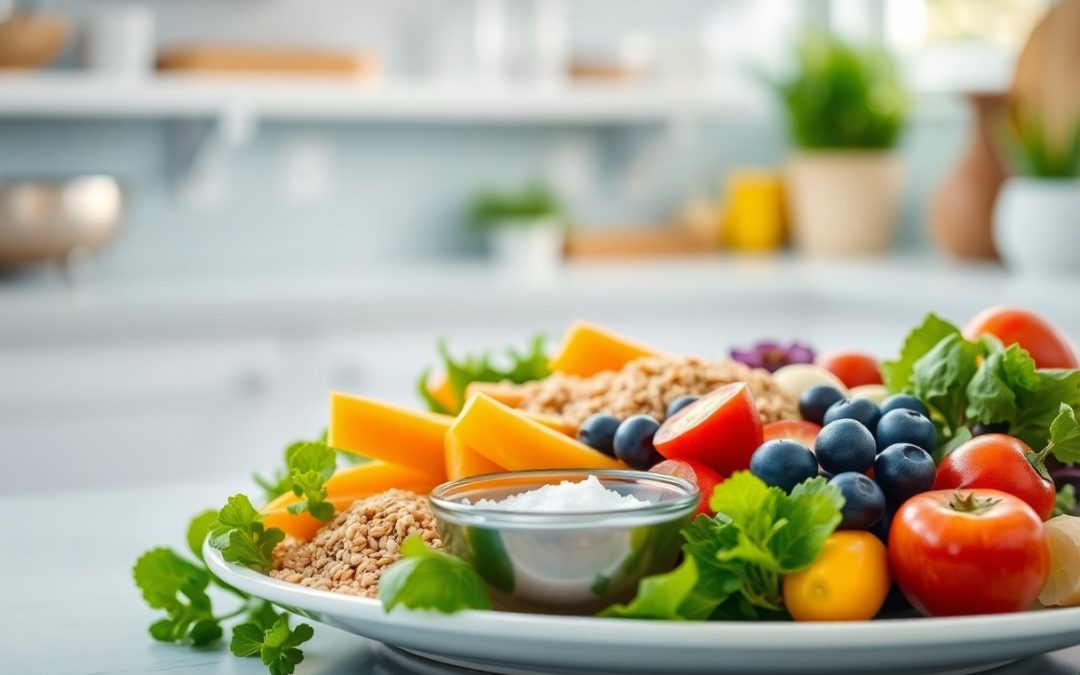Sodium intake plays a significant role in your overall health, and excess consumption can lead to serious health issues, including high blood pressure and cardiovascular diseases. By making simple dietary changes, you can effectively reduce your sodium intake and improve your well-being. This blog post will guide you through practical strategies for lowering sodium in your meals, enabling you to make informed choices that support a healthier lifestyle. Discover how small adjustments can have a big impact on your health and quality of life.
Understanding Sodium
To truly grasp the importance of sodium, you need to recognize its role in your daily diet and health. Many people consume excessive amounts of sodium, often without realizing it, leading to various health issues. By understanding sodium, you can make informed dietary choices that enhance your well-being.
What is Sodium?
Behind its important role in nutrition, sodium is a mineral commonly found in table salt and various foods. It’s necessary for important bodily functions, including nerve transmission and fluid balance. However, most individuals consume well above the recommended levels, which can have negative health consequences.
The Role of Sodium in the Body
By understanding how sodium functions within your body, you can appreciate its significance. Sodium is vital for maintaining plasma volume and acid-base balance, and it facilitates the transmission of nerve impulses, allowing your muscles and nerves to function properly. However, excessive sodium intake can lead to elevated blood pressure and increase your risk of cardiovascular diseases.
With around 4,310 mg of sodium consumed daily by adults globally, which is more than double the World Health Organization’s recommendation, it’s evident that many people are at risk of these adverse effects. This excess sodium primarily comes from processed foods, making it important to be mindful of your dietary choices.
Recommended Sodium Intake Levels
Sodium’s recommended intake for adults is less than 2,000 mg per day, according to the World Health Organization. This translates to less than 5 grams of salt, which is approximately a teaspoon. For children aged 2-15 years, these levels should be adjusted downwards based on their energy needs.
This understanding of recommended intake levels highlights the importance of monitoring your sodium consumption. By adhering to these guidelines, you can significantly reduce your risk of hypertension and associated health issues, leading to a healthier lifestyle. Making small adjustments to your diet can help you stay within these recommended limits and improve your overall health.
The Health Risks of High Sodium Consumption
One of the most significant concerns with a high intake of sodium is its direct link to elevated blood pressure, which dramatically increases your risk of cardiovascular disease. Excess sodium consumption is a well-established cause of hypertension; nearly 1.89 million deaths each year are attributed to conditions related to high blood pressure, highlighting the critical need for dietary moderation.
High Blood Pressure and Cardiovascular Disease
High levels of sodium in your diet lead to raised blood pressure levels, placing undue strain on your heart and blood vessels. Over time, this can result in serious cardiovascular issues such as heart attacks and strokes. Reducing your sodium intake is therefore crucial for maintaining your heart health.
Other Health Implications
High sodium consumption is linked not just to cardiovascular diseases but also to various other health concerns. These include an increased risk of gastric cancer, obesity, osteoporosis, and kidney disease. Additionally, too much sodium can exacerbate conditions like Meniere’s disease, which affects your inner ear and balance.
Considering these broader implications, it becomes clear that lowering your sodium intake can be transformative for your overall health. By making simple dietary adjustments, such as opting for fresh foods and reading labels carefully, you can significantly decrease your risk of not only heart-related issues but also various chronic conditions that can profoundly affect your quality of life. Taking proactive steps towards reducing sodium intake is a worthwhile investment in your long-term health.

Sources of Sodium in the Diet
After understanding the significance of sodium reduction for your health, it’s vital to recognize the various sources of sodium in your diet. Sodium can be found in both natural forms and added through food processing. By identifying these sources, you can make informed choices that align with your dietary goals.
Natural Sources of Sodium
Below, it’s important to note that sodium is naturally present in a variety of foods. Dairy products like milk, meats, and shellfish contain moderate amounts of sodium vital for bodily functions, such as maintaining plasma volume and transmitting nerve impulses.
Processed Foods and Sodium
Sources of sodium in your diet are predominantly derived from processed foods. An estimated 70% of the sodium you consume comes from these products, including breads, processed meats, and snack foods. With the global mean intake of adults at 4310 mg/day, significantly higher than the WHO recommendation of less than 2000 mg/day, processed foods are a primary concern in sodium intake.
But many people overlook the impact of processed foods on their sodium intake. Items such as canned soups, sauces, and frozen meals often have added sodium to enhance flavor and preserve freshness. Consequently, checking the sodium content on product labels is vital for making healthier choices.
Hidden Sources of Sodium
One major factor that contributes to your sodium intake involves hidden sources often contained in everyday foods. Items like condiments, salad dressings, and seasoning blends frequently contain large amounts of sodium, which can accumulate quickly in your diet without you realizing it.
Another area to be vigilant about is restaurant foods. Many dishes served at restaurants, including those marketed as healthy, can be laden with sodium. Cooking at home allows you to control how much sodium is added to your meals, providing a healthier alternative to dining out.
Strategies for Reducing Sodium Intake
Despite the widespread consumption of high-sodium foods, you can take simple steps to significantly reduce your sodium intake and enhance your overall health. Incorporating effective strategies into your daily routine can help you meet the World Health Organization’s recommendation of less than 2000 mg of sodium per day, which is equivalent to less than 5 g of salt.
Reading Nutrition Labels
Before grabbing packaged foods, take a moment to read nutrition labels. Look for sodium content per serving and opt for products that are labeled low-sodium (less than 120mg/100g). This small habit can significantly reduce your sodium intake over time.
Choosing Fresh and Minimally Processed Foods
Reducing your consumption of processed foods can have a remarkable impact on your sodium levels. Fresh fruits, vegetables, whole grains, and lean proteins typically contain much lower amounts of sodium compared to packaged or canned items.
In fact, switching to fresh and minimally processed foods not only helps cut sodium intake but also provides imperative nutrients that processed foods often lack. Make it a habit to shop the perimeter of the grocery store, where fresh produce and unprocessed items are usually located, allowing you to build healthier meals.
Cooking Techniques to Limit Salt
Techniques you employ in the kitchen can make a big difference in your sodium consumption. Instead of adding salt while cooking, explore alternatives that enhance flavor without the need for additional sodium.
But using lower-sodium alternatives like homemade broths or unsalted cooking oils can not only reduce the salt content in your meals but also create delicious flavors. Experiment with steaming, baking, or grilling instead of frying to keep sodium levels in check and improve the nutritional value of your dishes.
Flavoring Without Salt: Herbs and Spices
To elevate the flavor of your meals, turn to herbs and spices instead of salt. Seasoning your food with garlic, lemon juice, or a variety of herbs can enhance taste without adding any sodium.
Nutrition can still thrive in your diet without excess sodium. Incorporating a wide range of herbs and spices not only keeps your meals flavorful but also introduces new health benefits. For instance, spices like paprika and cumin can add complexity to your dishes while being naturally low in sodium, helping you maintain a balanced diet.

Practical Tips for Everyday Sodium Reduction
Once again, reducing your sodium intake doesn’t have to be complicated. Making simple dietary changes can significantly impact your overall health. Here are some practical tips to help you along the way:
- Choose fresh, minimally processed foods.
- Read nutrition labels to find low-sodium options (less than 120 mg/100 g sodium).
- Cook meals from scratch using herbs and spices instead of salt.
- Limit high-sodium condiments and sauces.
- Remove the salt shaker from the dining table.
Thou can elevate your health through mindful eating.
Meal Planning and Preparation
About planning your meals in advance can help you control sodium intake effectively. By preparing grocery lists that focus on whole foods, you can minimize the likelihood of purchasing processed items that are often higher in sodium content. Make it a habit to incorporate fruits, vegetables, whole grains, and lean proteins into your diet.
Eating Out: Making Informed Choices
Above all, when dining out, you can still enjoy meals while being conscious of sodium levels. Opt for dishes that are grilled, baked, or steamed, and request dressings or sauces on the side to control how much you add to your meal.
Plus, many restaurants now provide nutritional information on their menus or websites. Take advantage of this resource to compare sodium content before making your selections. You can also ask your server about low-sodium options or modifications to dishes that can reduce sodium levels without sacrificing flavor.
Smart Snacking
Eating nutritious, low-sodium snacks can make a big difference in your overall intake. Consider choosing fresh fruits, vegetables, nuts, and seeds instead of processed snack foods that typically contain added sodium.
Hence, by being mindful of your snack choices, you can avoid high-sodium pitfalls. Prepare healthy snacks at home, such as hummus with vegetable sticks or yogurt with fresh berries, to keep your cravings in check and your sodium intake low.
Modifying Recipes for Lower Sodium
Choices for reducing sodium levels in your favorite recipes are easier than you think. Try replacing salt with herbs, spices, or citrus juice to enhance flavor without the added sodium.
At your next cooking venture, experiment with different herbs and spices to create delicious, low-sodium meals that satisfy your palate. Using fresh ingredients and being creative in the kitchen will allow you to enjoy flavorful dishes while keeping your sodium intake within healthy limits.
Sodium Reduction: Enhance Your Health with Simple Dietary Changes
Keep in mind that understanding food additives is vital for making informed choices about your diet. Many processed foods contain added sodium, which can significantly increase your daily intake without you even realizing it. Being aware of these additives can help you take control of your health.
Sodium in Canned and Packaged Foods
Packaged foods, including canned vegetables and soups, often contain high levels of sodium to enhance flavor and preserve shelf life. This can lead to excessive sodium consumption, which exceeds the World Health Organization’s recommendation of less than 2000 mg per day, ultimately increasing your risk of health issues.
Sodium Preservatives and Flavor Enhancers
On many food labels, you may find mentions of sodium-based preservatives and flavor enhancers, such as monosodium glutamate (MSG) and sodium nitrite. These additives not only boost the taste of your favorite snacks and processed meals but also contribute to your total sodium intake.
And while they improve flavor and prolong freshness, these sodium additives can add up quickly, with an estimated global daily intake among adults reaching 4310 mg. Being aware of the presence of these additives can help you make better dietary choices and reduce your overall sodium consumption.
Role of Salt Substitutes
Understanding salt substitutes is vital as they can reduce your sodium intake without sacrificing taste. Many salt substitutes are designed to mimic the flavor of traditional table salt while using potassium instead of sodium, making them a healthier alternative for seasoning your meals.
It is important to choose the right salt substitutes that not only taste good but also fit your dietary needs. Some substitutes, however, may not be suitable for individuals with kidney problems, so check with a healthcare provider before making these swaps. Adopting salt substitutes can effectively lower your sodium intake while still allowing you to enjoy flavorful meals.
Sodium Reduction: Enhance Your Health with Simple Dietary Changes
On the whole, reducing your [sodium](https://bit.ly/PerKETODiel) intake can significantly improve your health by lowering blood pressure and decreasing the risk of cardiovascular diseases. By making simple dietary changes such as opting for fresh, minimally processed foods, using herbs for flavor, and avoiding high-sodium processed items, you can effectively manage your sodium consumption. With consistent effort and awareness, you can enjoy the benefits of better health and well-being while contributing to a broader movement for healthier eating.


